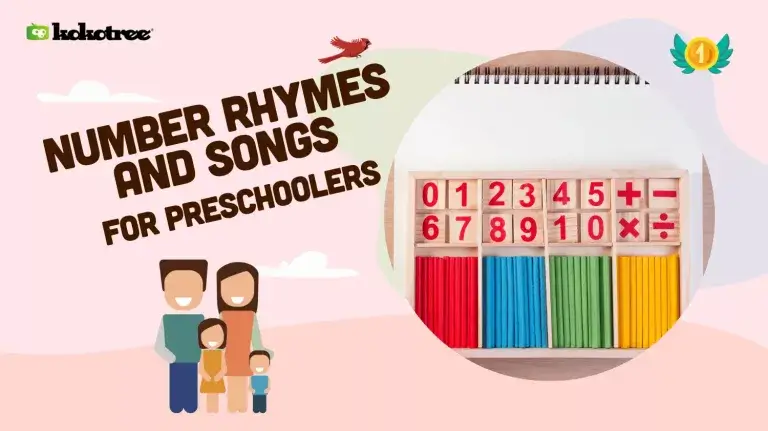

If you’re like me, you know the power of a catchy tune. It’s not just about getting a song stuck in your head – it’s about learning. That’s why I’m a big fan of number rhymes and songs for preschoolers. They’re a fantastic, fun-filled way to introduce little ones to the world of numbers.
Imagine your child or student, happily singing along to a catchy tune. Now, picture them suddenly realizing they’ve learned to count from 1 to 10, all thanks to that song. That’s the magic of number rhymes and songs. They make learning preschool math exciting and memorable.
Moving on from the magic of these melodies, let’s now delve into the tangible benefits these sound fables bring to preschoolers. We’ll be focusing on how they gently but effectively nudge little ones onto the learning path.
Number rhymes and preschool songs aren’t just ear-pleasing tunes. They’re an important aid in helping kids recognize numbers. When I see children listening to these rhymes, I see their eyes light up as they begin to associate the drawn digits with the counted ones. A kid that sways to ‘One-two-buckle-my-shoe’ will instinctively recognize ‘1’ and ‘2’ when they see them. It’s the rhythm and rhyme that make the connection stronger and easier to remember.
Moreover, it’s not just about number recognition. Rhymes and songs introduce preschoolers to the order of numbers and their patterns. They learn that three follows two, and that four is right after three, all danced out to a catchy tune!
Have you ever noticed how kids can remember the words of songs and rhymes more accurately than plain text or instructions? That’s because these tunes enhance their memory skills. An unforgettable rhythmic pattern or a familiar rhyme scheme can make a lasting impression in their young minds.
Research proves this fact. One study conducted by the University of Texas demonstrated that students retain information 20% more efficiently when it’s attuned to music.
Education and music, combined. Isn’t that a harmonious concept?
| Study | Organisation | Findings |
|---|---|---|
| Effect of Music on Memory Retention | University of Texas | 20% improvement in retention with the use of music |
Going ahead, we’ll talk about how such activities add to the overall cognitive development of children. Meanwhile, let’s continue humming the number rhymes and counting our blessings, for they’re lighting up the world of those tiny tots.
In this section, we’ll delve into a number of popular nursery rhymes that serve to both entertain and educate.
One of the most loved number rhymes is “Five Little Ducks“. This playful song deals with subtraction and numbers, making it a perfect tool to teach the little learners. Each verse sees one duck wanders off, teaching kids how to subtract one from a given number. Apart from learning number names, preschoolers also get the concept of “less than” in a fun way. When they sing, they’re unknowingly applying principles of arithmetic!
Remember how thrilled you were as a kid, anticipating what’s coming next after “One, Two, Buckle My Shoe”. Not only does this rhyme incorporate numbers 1-10, but it’s also packed with physical actions which help develop gross motor skills. The beauty of such rhymes is how they manage to combine numerical concepts with actions, making learning a joyful process. It’s often children’s stepping-stone to understanding sequential order of numbers.
Recognized by many preschool teachers and parents alike, “Ten in the Bed” helps children to familiarize with the concept of descending order and subtraction. The song features ten friends who are all in bed, and one by one, they fall out. As each friend leaves the comfort of the bed, the number in bed decreases. This catchy tune thus subtly introduces children to the fun aspect of subtraction.
Exploring the world of numbers is a fascinating journey for preschoolers. Tap into their world filled with curiosity and energy to make learning a fun-filled experience. Here are some tips to help you incorporate number rhymes and songs into their daily routine.
Setting up a daily singing routine can be a great way to start. Incorporate singing times into transitions such as meal times, bath times, and before bedtime. Not only do they insert a dash of fun into the mundane, but also create teachable moments. Preschool children tend to remember things that are repeated on a regular basis.
Incorporate songs and rhymes that focus on the numbers during these times. Modify the lyrics slightly to make the song relevant. For example, when singing the “Five Little Ducks” song, use rubber duckies for bath times. This way, kids engage with the number concept, which helps with their cognitive development.
By nature, children are tactile learners. Using props can make their lessons visual and practical, facilitating easier understanding. So the use of props is strongly recommended when teaching number rhymes and songs.
When reciting “One, Two, Buckle My Shoe”, use real life objects like shoes and belts to practice the counting. During the “Ten in the Bed” song, engage with bed time toys for reinforcement of the subtraction concept.
Additionally, involve them in playful actions like clapping, hopping or pointing to the corresponding number. When the lesson is playful, it becomes enjoyable rather than a chore.
I’ve shared how number rhymes and songs can be a powerful tool in a preschooler’s learning journey. It’s about making education enjoyable and memorable, turning everyday routines into opportunities for learning. These activities aren’t just fun – they’re also fostering cognitive development in our young learners. So next time you’re transitioning from playtime to mealtime or getting ready for bed, remember to incorporate a number song or rhyme. You’ll be amazed at how quickly they pick up new concepts. And who knows? You might just find yourself having as much fun as they are. After all, learning should never be a chore – for them or for you.



